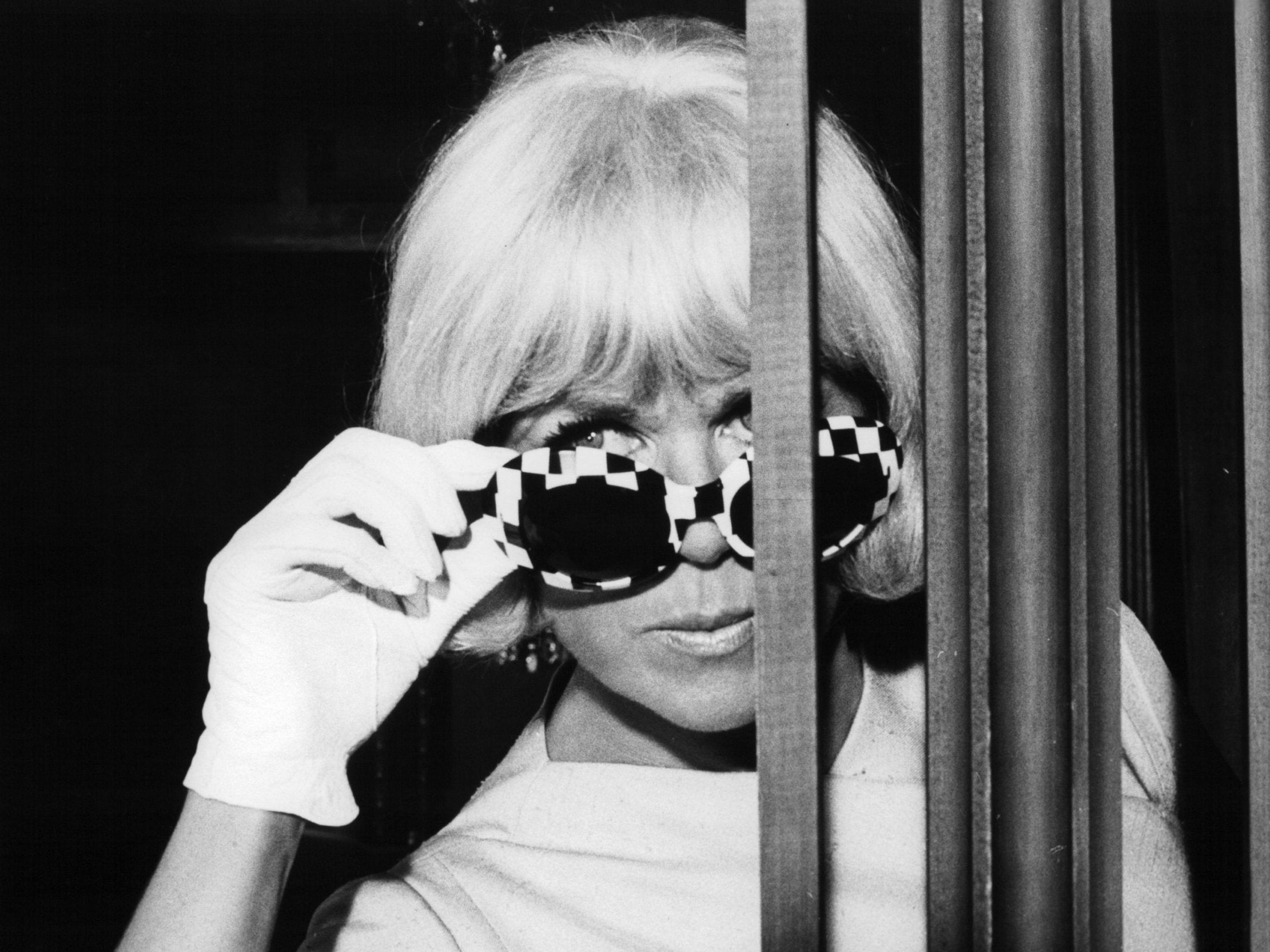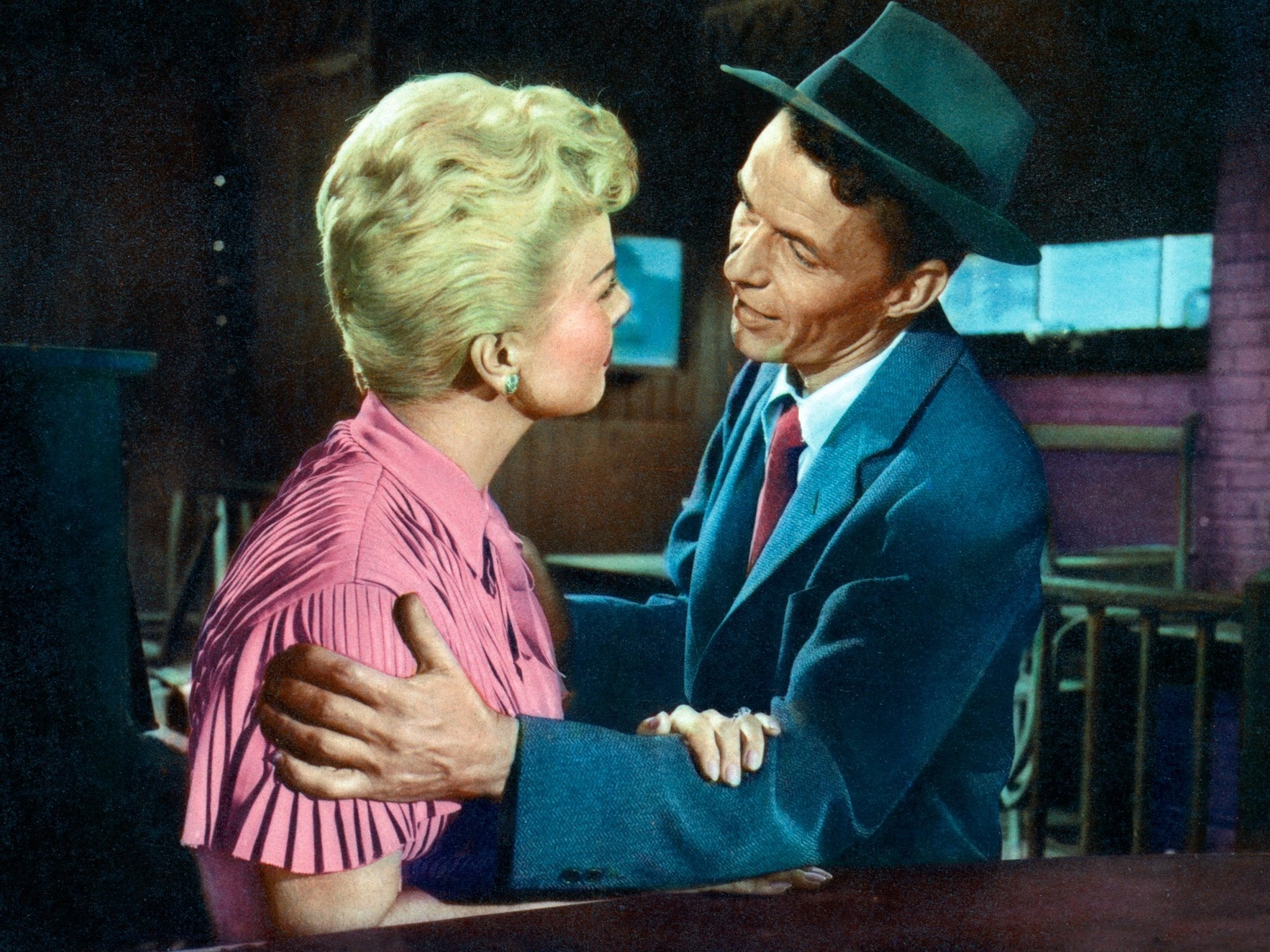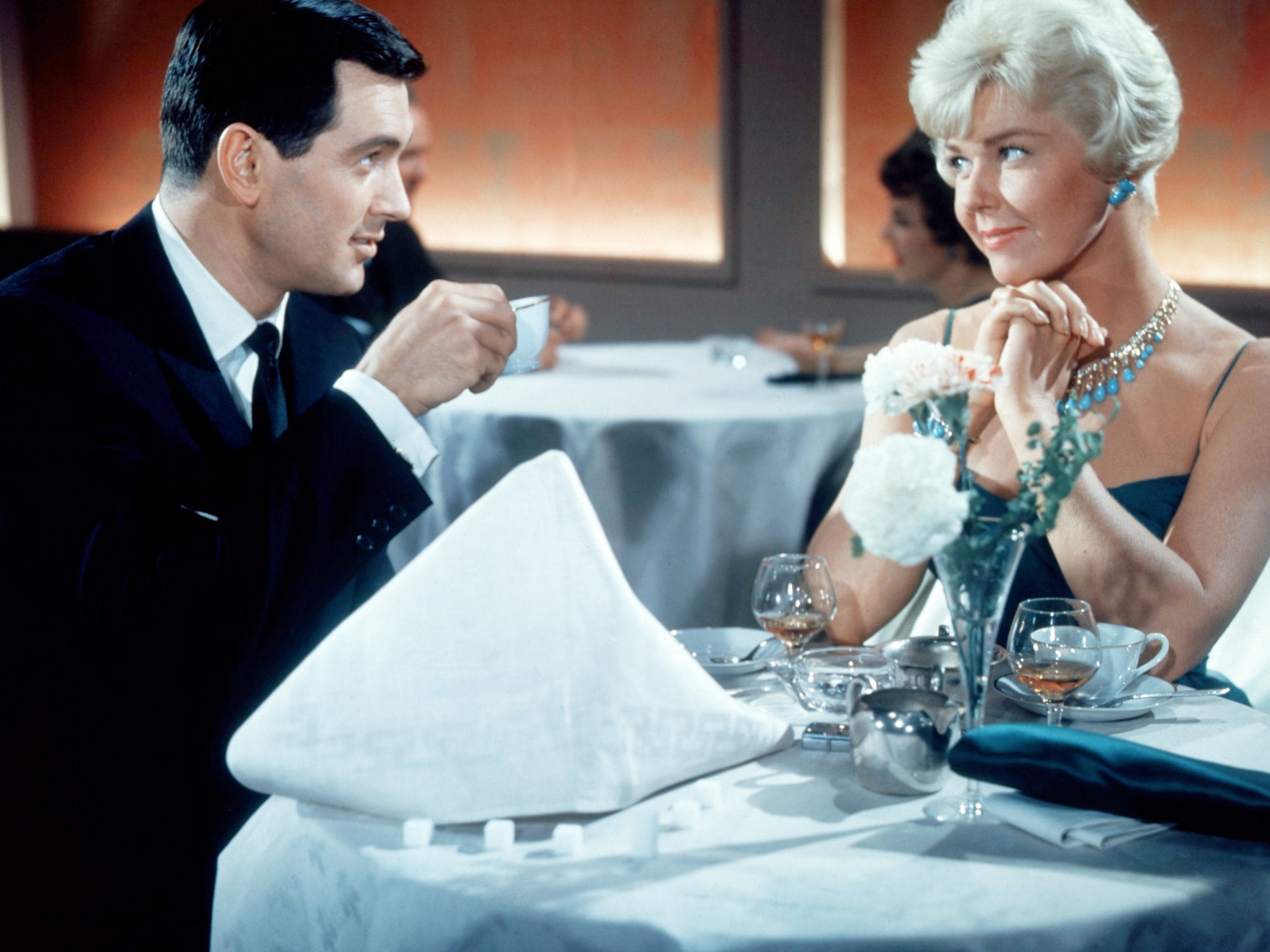Doris Day: The actor and singer who symbolised wholesome America in the Fifties and Sixties
Despite working with Hitchcock, Day was far more drawn to comedies, in which she cemented her onscreen persona as the modern working woman guarding her chastity against smooth-talking wolves

Your support helps us to tell the story
From reproductive rights to climate change to Big Tech, The Independent is on the ground when the story is developing. Whether it's investigating the financials of Elon Musk's pro-Trump PAC or producing our latest documentary, 'The A Word', which shines a light on the American women fighting for reproductive rights, we know how important it is to parse out the facts from the messaging.
At such a critical moment in US history, we need reporters on the ground. Your donation allows us to keep sending journalists to speak to both sides of the story.
The Independent is trusted by Americans across the entire political spectrum. And unlike many other quality news outlets, we choose not to lock Americans out of our reporting and analysis with paywalls. We believe quality journalism should be available to everyone, paid for by those who can afford it.
Your support makes all the difference.Doris Day was a singer and actor who personified wholesome American womanhood in the 1950s and 1960s – memorably as the chaste but chased-after love interest in sex farces with Rock Hudson and Cary Grant.
Despite Day’s perpetually sunny image, her life was marked by periods of physical, emotional and financial abuse. Her first husband beat her, her second couldn’t stomach her success and her third cheated her out of her hard-won fortune. By the time of her death, she had long retreated from show business and had become renowned for her work in animal welfare. In 2004, when she received the Presidential Medal of Freedom, the US’s highest civilian honour, the award cited her influence as a performer and an activist.
A comely platinum blonde with a dramatic and slightly husky voice, Day had catapulted to fame as the armed forces’ sweetheart with her million-selling recording of “Sentimental Journey”. The song, released in 1945 and backed by Les Brown’s band, helped set the musical tone of home-front America during the Second World War.
“She was every bandleader’s dream, a vocalist who had natural talent, a keen regard for the lyrics and an attractive appearance,” Brown once said. “As a singer, Doris belongs in the company of Bing Crosby and Frank Sinatra. And I’d say that next to Sinatra, Doris is the best in the business on selling a lyric.”
Her good looks and unwaveringly warm personality helped her transition to movies, even as she remained a top-ranked pop singer with hit ballads such as “It’s Magic”, “Secret Love” and “Que Sera, Sera (Whatever Will Be, Will Be)”, the last of which became her theme song.
Beyond her pop credentials, she possessed an unerring sense of delicate swing. She made excellent and far-more intimate recordings with pianist Andre Previn on the 1962 album Duet and continued to thrive several more years without compromising her style, despite changing musical tastes.
Her movie career, which included nearly 40 films over two decades, was far more chequered. While she showed promise in dramatic roles – she worked memorably with director Alfred Hitchcock – she was far more drawn to bland comedies and mediocre musicals that were within her comfort zone.
She initially became an audience favourite as a peppy and beautiful star of musicals such as Romance on the High Seas (1948), Calamity Jane (1953) and The Pajama Game (1957). She remained for several years one of the country’s top box-office draws.
In films such as Teacher’s Pet (1958), Pillow Talk (1959) and That Touch of Mink (1962), she cemented her persona onscreen: the modern working woman guarding her chastity against smooth-talking wolves – Clark Gable, Rock Hudson and Cary Grant, respectively.
Her film choices gave Day her enduring reputation as a perpetual virgin – “the all-American middle-aged girl”, movie critic Pauline Kael wrote witheringly in 1963. The actor’s screen persona took on comic dimensions. Entertainers including Groucho Marx and Oscar Levant were variously credited with the much-repeated quip: “I’ve been around so long, I can remember Doris Day before she was a virgin.”
Day later wrote in a memoir, “There was never any intent on my part either in my acting or in my private life to create any such thing as an image, but I suppose that whatever there is of me that shines through on the screen looks wholesome and virgin-y. I don’t think anybody would have believed me if I had been cast in the role of the mistress whore Mildred in Of Human Bondage.”
She also said she rejected the part of the alcoholic seductress Mrs Robinson in The Graduate (1967) because “it offended my sense of values”.
One of Day’s best performances was as troubled jazz-era singer Ruth Etting in Love Me or Leave Me (1955). James Cagney played her gangster boyfriend, Martin “The Gimp” Snyder.
The film’s producer sought Day for the role because he felt she would lend dignity to Etting, an otherwise vulgar character.
New York Times movie critic Bosley Crowther wrote that the two leads “do their jobs extremely well and make an uncommonly interesting and dramatic couple for a musical film. The proof is that, when Mr Cagney finally slaps Miss Day in the face, the audience reacts to the shameful violence with genuine and audible gasps.”

Crowther noted Day’s skilful way with the period songs, including “Mean to Me” and “Ten Cents a Dance”. The soundtrack was released as an album and sold well.
Day also proved adept at playing the mother of a kidnapped child in Hitchcock’s “The Man Who Knew Too Much” (1956) with James Stewart as her husband. As a nod to her recording career, her character was made a singer, and a crucial moment in the film featured her performing “Que Sera, Sera”.
Day continued to take sporadic dramatic risks in films including Julie (1956) with Louis Jourdan and Midnight Lace (1960) with Rex Harrison. But she said she kept such roles to a minimum because fans disapproved, and being menaced onscreen reminded her of her abusive first husband.

Doris Mary Anne von Kappelhoff was born in Cincinnati on 3 April 1922. Her mother named her after silent-screen actor Doris Kenyon and encouraged her daughter’s interest in music and dance. Her parents’ marriage unravelled, she later said, because her father, a respected piano and choral teacher, was having an affair with her best friend’s mother.
Meanwhile, Doris was showing promise as an entertainer. At 13, she and a male partner won a $500 prize in a Cincinnati dance contest. Their plan to go to Hollywood ended when she injured her right leg in a car accident.
During her 14-month recovery, she took singing lessons and modelled her voice on what she called the “casual yet clean” style of Ella Fitzgerald. A Cincinnati nightclub owner hired her and renamed her after she had sung the pop tune “Day After Day”.
“I’m glad you didn’t catch me singing the Götterdämmerung,” she told the owner, referring to the Wagner opera.

Day was briefly a vocalist for Bob Crosby’s big band before settling into a long job with Les Brown’s band in 1940. She liked Brown’s paternal style and his low tolerance for drinkers and womanising musicians.
With Brown, Day recorded such early favourites as “My Dreams Are Getting Better All the Time” and “You Won’t Be Satisfied (Until You Break My Heart)”. She twice took absences from the band to marry.
Her first marriage, in 1941, was to Al Jorden, a talented trombonist but a jealous and “psychopathic sadist” who often beat her up, she later recalled. He once tried to force pills on her that would cause her to miscarry. She gave birth to their son, Terry, and they divorced soon after.
In 1946, she married saxophonist George Weidler, who converted her to Christian Science. She tried to live as a Los Angeles housewife before their amicable parting. Weidler had reservations about becoming “Mr Doris Day”, and he was certain of her future stardom.
While continuing an active recording career at Columbia Records, Day flourished in movie musicals and appeared in supporting dramatic roles. She was the girlfriend of an alcoholic trumpeter played by Kirk Douglas in Young Man With a Horn (1950) and was the conflicted wife of a thuggish Klansman (Steve Cochran) in Storm Warning (1951), a film that drew admiring attention from Hitchcock.
Producer Ross Hunter gave audiences a taste of Day’s potential as a sex symbol when he put her in chic, form-fitting Jean Louis for Pillow Talk. The film, which brought her an Academy Award nomination, marked her Hollywood apex. Her career petered out in increasingly vacuous Pillow Talk rip-offs and other vapid comedies.
She ended her film career in the late 1960s with a cosmetics industry spy thriller (Caprice) and a comedy about a blackout (Where Were You When the Lights Went Out?) – films of such low quality that a critic with Saturday Review magazine noted in his assessment, “Doris Day’s fans, if there are any left...”
In 1968, as she was winding down her career, her third husband, producer Martin Melcher, died unexpectedly at 52. She discovered that Melcher and her lawyer, Jerome Rosenthal, had squandered her entire fortune and left her $500,000 in debt.
Day won a $26m civil suit against Rosenthal, but the two sides negotiated for 17 years to reach a $6m settlement. Rosenthal was disbarred.
After Melcher’s death, Day spent five years in a CBS series, The Doris Day Show, to which Melcher had committed her without her knowledge; she and the critics hated it. She also married and divorced for the last time, to a restaurant worker, Barry Comden.
Her son, Terry, a record producer who sang on the Beach Boys album Pet Sounds, died in 2004. Day died on 13 May 2019 at her home in Carmel Valley, California. She was 97.
In her later years, she cared for many pets and started animal welfare lobbying organisations, including the Doris Day Animal League and the Doris Day Animal Foundation. She successfully advocated a California law for mandatory counselling for people convicted of animal abuse.
“The more I study human beings,” she once said, “the more I love animals.”
Doris Day, singer and actor, born 3 April 1922, died 13 May 2019
© The Washington Post
Join our commenting forum
Join thought-provoking conversations, follow other Independent readers and see their replies
Comments